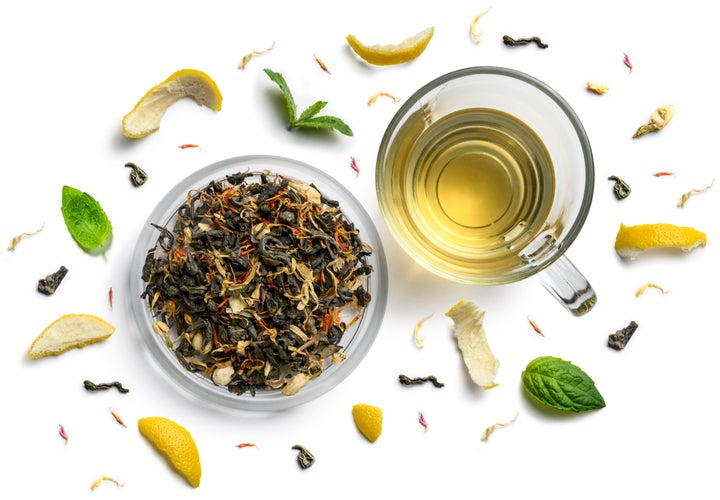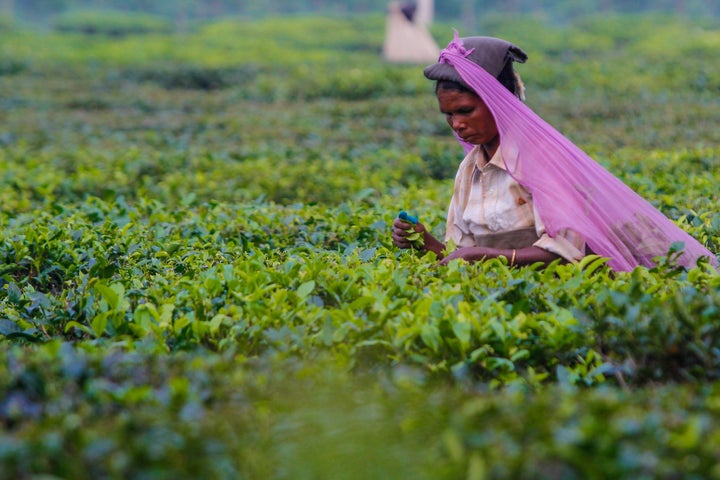You can spend a few bucks on tea bags at the grocery store, around $20 for loose leaf tea at specialty shops or even hundreds of dollars on rare varieties of tea leaves. But can you even taste a difference? Does the mechanization of mass harvesting devalue the leaves? And do different teas contain the same nutritional benefits?
We talked to tea experts to find out the key aspects driving the price of one of the world’s most consumed beverages, and how these choices affect the final product. Here’s what you need to know.
In general, the closer the leaves are to their whole form, the more expensive the tea.
When discussing the differences between cheaper and more expensive tea, Steve Schwartz, the CEO and founder of Art of Tea, said picture a bag of chips. At the top of the bag (after you get past all the air) are whole chips, which he describes as “perfect, beautiful and uniform.” Toward the middle of the bag they’re a little bit broken, and at the very bottom of the bag is basically dust.
“As they’re producing the whole-leaf teas in the factories, the dust flies up in the air, falls to ground, and they sweep it into giant piles; that’s typically what’s reserved for most traditional paper tea bags,” Schwartz said. Tea leaves, when kept in their whole form, trap essential oils, amino acids, catechins and flavonoids. “All the good stuff for you is trapped within those whole leaves,” he said.

Of course, high-quality bagged teas are available; you just need to know where to look.
“If you are looking for bagged teas, I recommend sourcing from a vendor that is vertically integrated and doing the sourcing and blending, and packing as close to home as possible to ensure the high-quality standards offered from a domestic tea blender manufacturer,” Schwartz said. “I would avoid tea bags blended and packed outside of the U.S. to avoid quality dilution, loss of aroma and authentic shelf life of the tea. Steer clear of hand sealed or sewn bags, as the conditions are not always ideal for the workers.”
Mechanical processing increases yields, but can decrease quality and nuanced flavor.
In the tea world, there are two main categories: commodity-grade and traditional whole leaf teas. Whole leaf teas are more highly valued than commodity-grade teas, which haven’t been treated in a way that ensures the integrity of the leaf has been maintained. “All tea comes from the Camellia sinensis plant, but there’s a lot of different things you can do to the leaf once you harvest it,” Ana Dane, partner at In Pursuit Of Tea, told HuffPost.
“When you’re aiming for good-tasting tea you want the new growth, which is the buds and the top parts of the plant,” Dane said. While in the old days these buds would be exclusively hand-picked (humans have been harvesting and making tea for thousands of years), these days most of the tea that’s grown and consumed is picked and processed using mechanized equipment.

While mechanization speeds up the harvesting process, Dane explained that in addition to buds you’re also getting leaves that are a little farther down the stalk, which, despite helping the plant live and survive, don’t taste particularly good.
The majority of black teas on the market undergo a mechanical process called crush, tear, curl (CTC), in which the leaves are run through cylindrical rollers with hundreds of sharp teeth. “It’s a way to quickly and really economically turn tea leaves it into a product that you can then get into a tea bag really easily,” Dane said.
In contrast to the mechanical processes used to make commodity-grade tea, traditional loose leaf teas are, in general, picked and processed by hand, which is a slower process. “Your yield is lower but the quality is higher because you’re maintaining the integrity of that leaf,” Dane said.
Being more gentle with the leaf lends a more nuanced flavor and fragrance to the resulting tea, in addition to being something beautiful to watch unfurl as it steeps. There’s more value associated with traditional whole leaf teas, as the careful processing required to make it costs more.
Packaging can play a role in driving up costs
For some brands, you may be paying more for pretty packaging and not necessarily for higher quality tea. “What you’re paying for with most loose leaf tea I see marketed in the West is the packaging,” Dane said.
Since American consumers are generally less educated about tea because of a lack of a strong tea culture (when compared to countries like China, Japan and India), there’s a tendency to skew toward brands with pretty, eye-catching packaging. Packages may also laud certifications like organic or fair trade to further draw in consumers, but quite often there’s not actually any information about where the tea you’re buying is sourced from.
Whatever package your tea comes in — beautiful or basic — Dane recommends taking it out of the packaging and doing a blind taste test. “If you love Earl Grey, buy four different brands of loose leaf Earl Grey and see what you like best when you’re not swayed by packaging,” she said.
A note on super expensive specialty teas
Whether you’re in the market for black tea, green tea, white tea or another type, a wide range of quality and price exists across all of the categories. This means that, whatever your budget, there is a tea out there to suit your needs.
Dane noted that the most expensive teas tend to fall into the oolong and pu-erh/heicha categories, as they are difficult to produce. “Oolongs are partially oxidized and heavily manipulated into certain leaf shapes, which takes much careful monitoring and skill,” she said. “Pu-erh is almost always aged or fermented, which requires extensive knowledge of a unique recipe to follow for the fermentation process.”
“You’ll also find very, very pricey white and green teas early in the spring — usually first harvests produced in highly specific, historically designated areas, made up of very small lots (since the leaf buds are only just beginning to develop),” Dane said.
Classic Chinese teas like Longjing (also known as Dragonwell) have been prized for centuries and continue to demand a high price.
Higher quality teas don’t require additions like milk or sugar to be palatable
It’s one thing to like adding a splash of milk, a touch of sugar or a squeeze of lemon to enhance the flavor of your tea. It’s another to require these additions in order to make your tea palatable.

Schwartz, an avid supporter of whole leaf teas, describes the tea you find in paper tea bags at the supermarket as disgusting.
“You need to add lemon to cut the flavor, milk in order to cut through the bitterness, or sugar to sweeten it and make it actually drinkable,” he said. “Drinking whole leaf tea is a beautiful, phenomenal experience.”
If your experience with tea is limited to commodity grade tea, Schwartz recommends branching out and spending a little more time and money on finding a high-quality tea experience. “It’s worth it, especially for people that say they’re not tea drinkers ― I wouldn’t be a tea drinker either if I was used to drinking the supermarket stuff,” he said.
“At the end of the day, it’s gotta taste great,” Schwartz said. Higher quality teas tend to have a better-balanced flavor profile (not overly bitter or astringent) and be self-drinking, meaning you don’t need to add anything to it in order to enjoy it. “On its own it should be delicious,” he said.
When buying tea from a new vendor, start small.
Price isn’t necessarily an indicator of quality, and at the end of the day it’s about finding something you enjoy and tastes good to you. Whether you’re new to the world of loose leaf tea or looking to try out brands that’s new to you, Schwartz recommends starting small. He noted that most tea companies will offer smaller packages (like individual samplers or sampler packs) that will allow you to try out teas without making a huge investment.
“Start small and see what the quality is,” Schwartz said. “You want to look for vibrancy in the leaf; how fresh does that leaf look? Is there a sheen or shine to it? How’s the aroma? Over 80% of what we taste is actually through our sense of smell; does it hit the nose in a pleasant way?”
Schwartz sees tea as an affordable luxury. “The difference between a high-quality tea and a low-quality tea could be about 10 to 20 cents per serving,” he said. “That’s it.”
High-quality tea goes a long way ― you get around 200 cups of tea from each pound. “For a few extra dollars you can have a high-quality tea experience, and enjoy the true craftsmanship and care that goes into it. It’s 100% worth that experience,” he concluded.